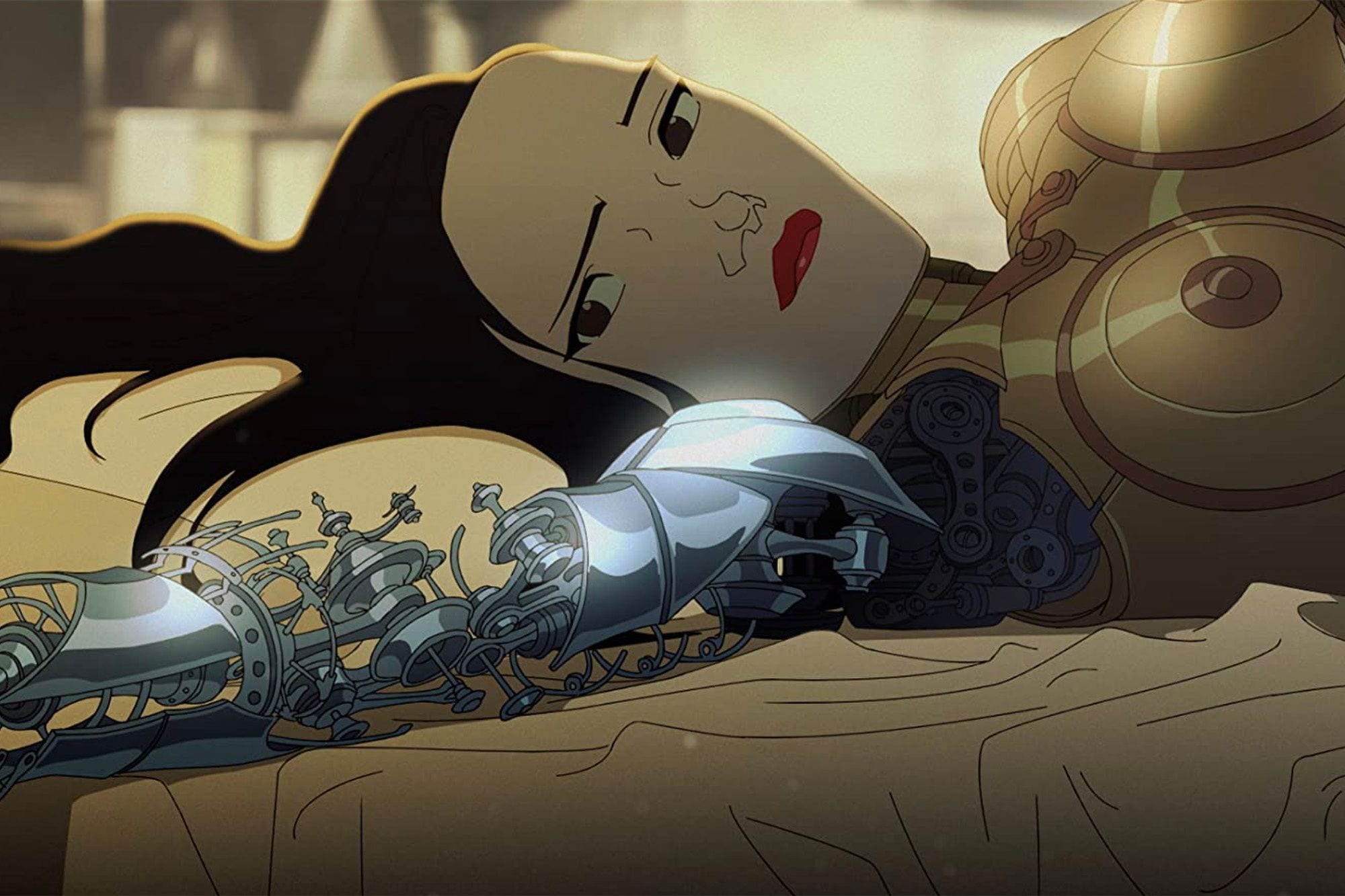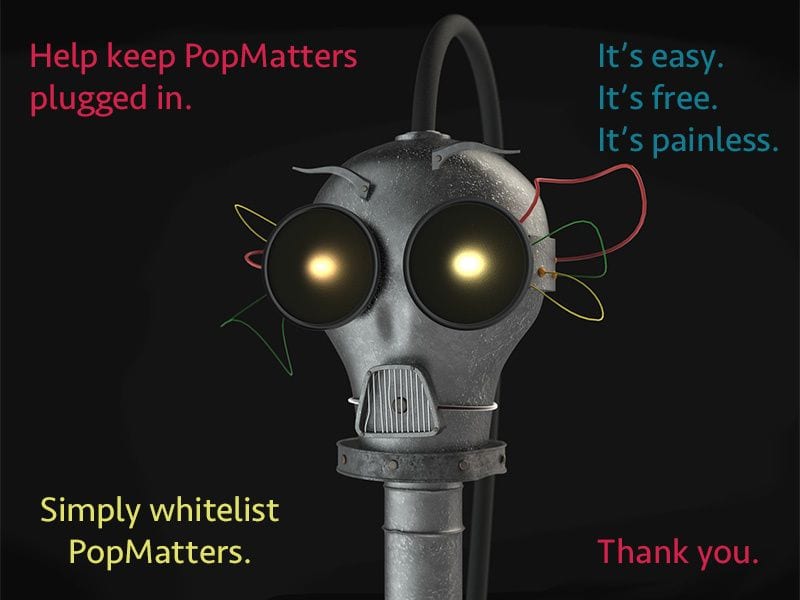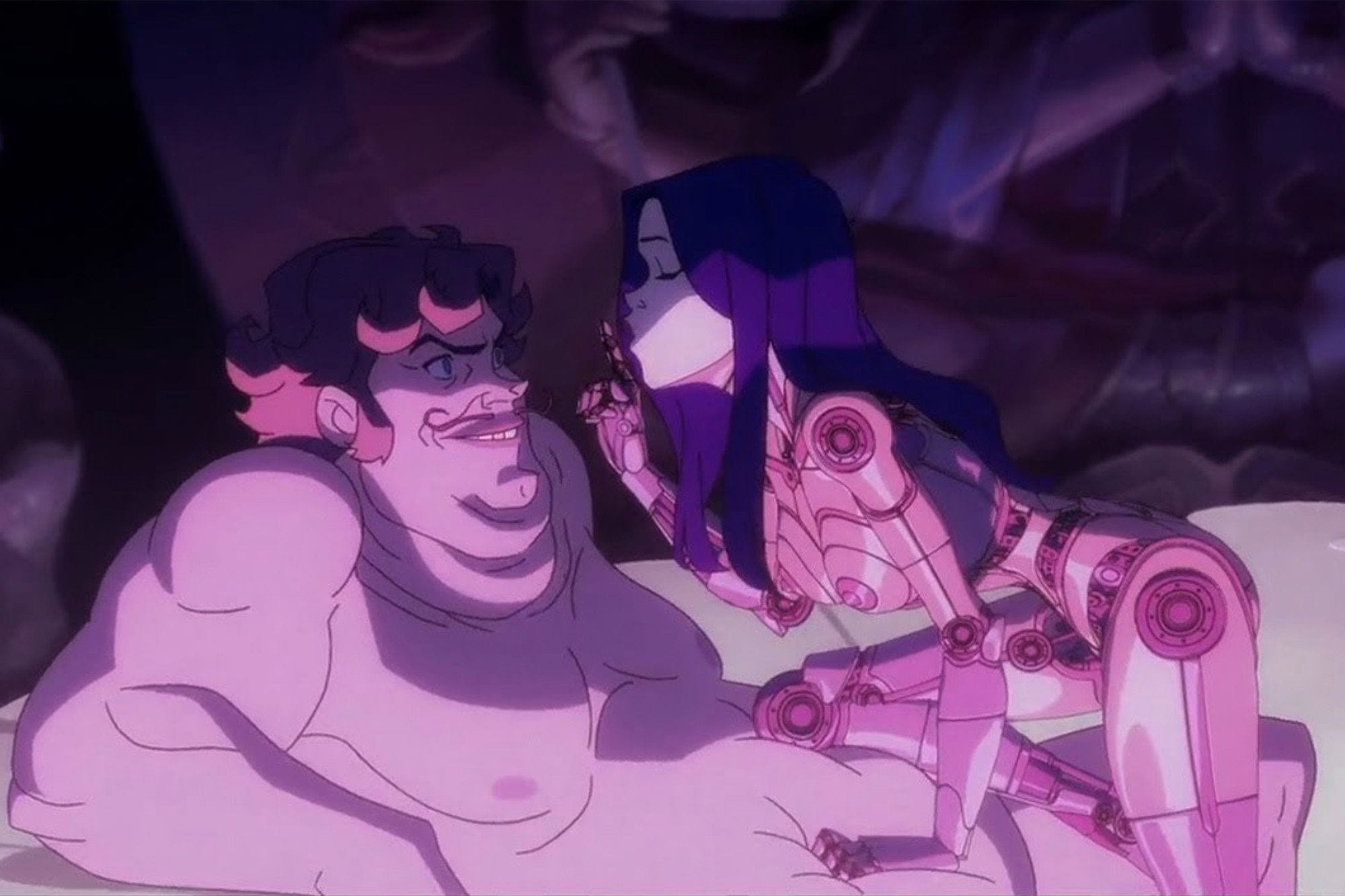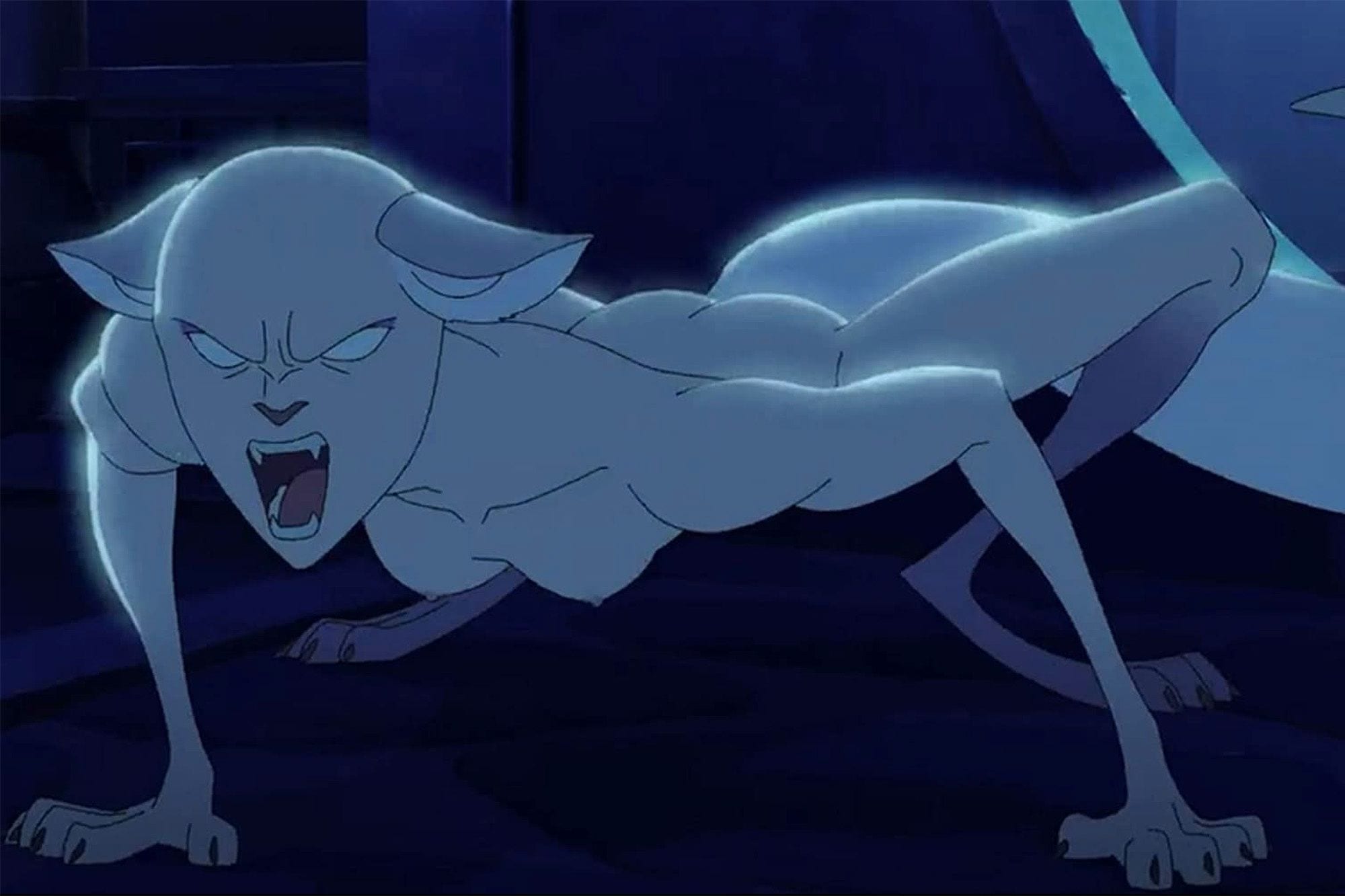

The “strong female” character is rapidly becoming a fixture in contemporary films, part of a cultural push for better representation of women. Applaudable and long overdue, this change presents filmmakers with an intellectual struggle. How, in a medium which has historically objectified and commodified women’s bodies, can female agency be visually represented? “Good Hunting”, an animated episode of Netflix’s Love, Death & Robots anthology, captures the complexity of this struggle in a compact 16-minutes. Better still, comparing the episode with the 2012 short story it was adapted from reveals where certain conventions in visual storytelling undermine female agency by mistaking objectification for empowerment.
“Good Hunting” is set in Hong Kong during the height of European imperialism. Both Ken Liu‘s story and the 2019 Netflix adaption follow the transformation of Yan, a huli jing or shapeshifting spirit with fox and human shapes. Trapped in her human body by industrial pollution, Yan is forced into prostitution and later turned into a cyborg sex slave by a member of the colonial upper class. Liang, a childhood friend turned engineer, builds Yan a new metal body so she can regain her shapeshifting powers—and by extension, her freedom.
At first glance, both are similar versions of a familiar story: strong female character takes control of her life and destiny through decisive action. The Netflix adaption is faithful to Liu’s story, except for a few seemingly minor plot tweaks and, of course, the fact that it’s animated. But the devil is in the differences, which undermine female empowerment in two key ways. First, the female body is viewed through an (animated) lens, which gravitates toward graphic nudity and fails to make the jump from objectifying to uplifting the female body. Second, male power and presence dictate the action in places where Yan is meant to shine—and does shine in the original story.
In Liu’s original text, Yan escapes male power and control through her shapeshifting metal body. In the metal human shape, she is strong enough to strike down a man trying to force himself on her. In the fox shape, she can occupy a body that hasn’t been sexualized. The Netflix adaption covers the same ground but stops short of freeing Yan’s metal body from oppressive sexualization and male desire. At fault is the way scenes of Yan’s bodies are visually constructed.
Throughout the animated episode, objectification and graphic sexual violence control how Yan’s body is seen. This is accomplished through a male gaze. As theorized by critic Laura Mulvey, the male gaze is a mainstream cinematic convention that aligns viewers with a typically male perspective. The camera is positioned in ways that construct the female characters on screen as objects. The male gaze emphasizes pieces of the body over the whole person. Seen in fragments, the female body becomes an object of (male) sexual desire.
Robot by Thor_Deichmann (Pixabay License / Pixabay)
An example of this fragmenting gaze appears early in Netflix’s “Good Hunting”. Yan’s mother is splashed with urine by (male) hunters and trapped in a half fox, half-human form. This fixing of the huli jing form is intended for male sexual pleasure, an indication of male control over the female body. Yan’s mother retains the limbs, tail, and head of a fox, but the torso of a woman, complete with naked breasts, hips, and crotch.
This moment also appears in Liu’s story, except Liang’s description of the halfway form is monstrous, not alluring. Yan’s mother has a half fox, half-human face and clawed hands. Readers are positioned to fear the huli jing, but certainly not to desire her. As a male character, Liang’s narration comes with a degree of sexual bias—he hesitates to splash Yan’s mother with urine because he doesn’t want to soil her dress. But once he does so, the narrative point of view doesn’t isolate parts of her transformed body for male sexual pleasure.
The animation of “Good Hunting” further incorporates the male gaze by mimicking conventional camera positioning to visually construct scenes of Yan being turned into a cyborg. This literal fragmentation of Yan’s body appears in both versions. The Netflix adaption depicts the experimental surgery via a series of shots focused on the same parts of the body as the sequence of Yan’s mother. Male gaze is evident in the way this construction privileges male bodies, male desires, and male characters. Yan is at her most vulnerable here, and everyone—surgeons, the governor, and the viewer—exploits her body for their own enjoyment and entertainment.
By contrast, Liu’s text articulates this event in a way which puts Yan back in control. Her “surgery” is described in her own words, through dialogue to Liang. Liang, taking in her new shape, notes the craftsmanship of her metal body but immediately promises to try and find a way to reverse it. Where the camera positioned the audience as party to Yan’s exploitation, narrative point of view puts empathy over desire.
(IMDB)
Like narrative point of view, animated storytelling has the potential to offer an alternative perspective to a camera’s male-privileging gaze. The Netflix adaption, however, goes to the effort of replicating the conventional camera view, male gaze included. The result is a “camera” which focuses on nudity and sex, particularly during the episode’s climax where Liang assembles Yan’s final body. When Yan is meant to be strongest, this animated male gaze takes away her strength and weaponizes her body against her.
Sequences of Yan draped over Liang’s worktable, grimacing or gasping as he rebuilds her body are full of sexual subtext. One shot looks directly at her ass before pulling back to show Liang staring down at her. A later sequence shows Liang placing rounded metal plates on Yan’s chest, completing her breasts in a gesture that’s a little too close to fondling for comfort.
Possibly these scenes were intended to reconstruct female nudity as a source of strength. Certainly, there are glimpses of Yan as a warlike figure. Her new metal body seems to grant her grounds to become the archetypal “strong female” character. But it’s quite a stretch to find graphic nudity empowering when the first 12-minutes of the episode depict Yan’s nude body as a symbol of male domination.
It’s important to note that the “male” in male gaze does not mean only male audience members are seeing women on screen as objects. It’s a way of interpreting and understanding information and symbols (or bodies) which can be embodied and enacted by people of all genders. It’s also deeply rooted in naturalized cinematography and visual storytelling, which means it’s not always obvious, even to female viewers.
Additionally, the Netflix adaption uses female nudity almost as a visual assault on the viewer, as if viewers won’t keep watching unless there is frequent sexually-loaded imagery. Maybe this should be expected from an anthology rated TV-MA for violence, nudity, and language. But nudity (especially female nudity) has a legacy of objectification that the Netflix adaption of Liu’s story perpetuates.
The Netflix adaption also undermines Yan’s strength when, for the sake of a tidy plot, it puts male characters behind every major plot point. Some of this is pulled straight from Liu’s text. Yan’s mother is killed by a man, and Yan is forced into prostitution and later robbed of her body by a man. The adaption tweaks the plot in two places, changing the role Liang plays in building Yan’s new body as well as Yan’s first actions in that body. These events happen at the adaptation’s climax and resolution, important moments for determining the meaning or message of the story.
In Liu’s text, Yan is the one who draws the designs for her new body, based on her memory and knowledge of shapeshifting. Liang builds it according to her instructions. The Netflix adaption shows Liang making the sketches while Yan sits off to the side, passively drinking tea. At a moment when she should be most in control of what’s happening to her body, she’s sitting back and letting a male character make the decisions for her. From a cinematic standpoint, fewer things to depict (and thus, convey) moves the scene along. But sacrificing an important opportunity for Yan to exercise agency seems like too high a price to pay for expediency.
The two versions end with Yan embarking on very different paths. In Liu’s story, Yan sets out to find other huli jing and help them gain metal bodies like hers. She is living on her terms and is in control of her narrative. According to the Netflix episode, however, Yan’s only goal is to get revenge on the men who wronged her. The last scene of the episode shows three European men pursuing a Chinese woman in a red dress—identical to clothing Yan wore as a prostitute. As these men attempt to rape the woman, Yan appears in her cyborg form and attacks them. Yan’s human body made her powerless but her cyborg body makes her powerful.
In this ending, Yan is, to a degree, empowered. But her transformation and new goal—revenge—are both driven by men. She does not express feelings of greater confidence or happiness. Her empowerment is strictly oppositional. She measures her worth based on what she can do to men. As a result, her ability to access power or be empowered will always rely on the presence of men.
Female power can, of course, exist as a violent revolt against sexual oppression, but Yan was never a violent character. When she and Liang first met as children, she chose to trust him (and educate him about huli jing) instead of attacking, even though Liang and his father were spirit hunters whose job it was to hunt and kill huli jing. The image of Yan as a snarling fox with teeth bared, reflected in the fractured lens of a victim’s glasses suggests Yan has become a very different person because of what she has experienced. Her role as a “strong female” falls into an anti-man stereotype, which undercuts her alleged empowerment.
(IMDB)
Liu, writing about his original text, said one of his main goals was to “turn the misogynistic hulijing legends upside down. In these legends, usually composed by male scholars, the hulijing is a dangerous feminine creature who uses her sexuality to deprive men of their vitality and essence. My hulijing questions that narrative.” In Chinese mythology, huli jing are seductresses, luring men with their beauty only to feast on their souls and drain their vigor—both physical and sexual.
The Netflix adaption not only fails to question the narrative, it ironically fulfills it. By reverting to power as polarity, the Netflix adaption caries the unspoken message that female empowerment and agency requires women to take on male power. Yan embodies what she was trying not to become—the huli jing men fear and desire, hunting the men who preyed on her. Although the violence of this ending is fitting for a show called Love, Death & Robots, it’s a sharp deviation from Liu’s story and from the arc of female empowerment the episode was supposedly building toward.
This ending also undermines the idea that Yan’s new body is a source of freedom from oppressive narratives. Because Yan is subject to stereotypes about huli jing as well as sexual domination, her changed shape only lets her trade out one form of oppression for another. She is no longer the cyborg sex slave of an imperial master, subject to male domination both physically and mentally. But regaining the ability to shift into her animal shape, this time cast in metal, comes with its own chains. Instead of being seen as an object, she is seen as a threat.
This oppositional power and the contingency of female power on male presence is avoided in Liu’s original text. The conclusion of that story empowered Yan on multiple levels. Liu’s Yan based her actions and desires on long-held values, not a desire for revenge. Men took a backseat during key moments as well. Instead of controlling Yan’s final transformation, the original Liang provides the assistance Yan needed to reclaim power on her own terms—a kind of metaphor for the role of men in feminism. By contrast, in the Netflix adaption, Liang dictates what Yan’s power will look like because he builds and designs her new body. In both versions of “Good Hunting”, Yan feels empowered, but only in Liu’s text is that power self-determined by Yan.
The Netflix adaption wouldn’t need to remove or even substantially change its mature content to address these issues. Although Liang, as a male narrator, biases both versions toward male desire, the animators and director could have taken their cues from the original story. Liu’s version of “Good Hunting” uses narrative point of view to acknowledge Yan’s beauty without making it the center of attention. Liang’s focus is not on possessing Yan’s body, but on his personal struggle to understand his relationship to Yan.
In writing about Yan’s body, Liu turns descriptions of nudity to consider what significance her nudity has for Yan. Her nude metal body is beautiful but a source of dismay instead of desire. This point of view distances itself from a male gaze by focusing on Yan as a whole person, something the Netflix adaption could mirror. For instance, a climactic sequence reflecting Yan as a whole instead of in fragments would have served both the needs of the plot and Yan’s reclamation of self. Similarly, Liu’s conclusion describes Yan finding wholeness, purpose, and freedom in her new body. The Netflix adaption opts for a version of purpose that is oppositional, fragmented, and far from freeing.
Ultimately, the Netflix adaption undermines itself. It presents a superficial arc of female empowerment, then allows animation and the role of male characters to undercut that message. The male gaze and male power shape the narrative around Yan, instead of Yan shaping it herself. The animation of the Netflix episode relies on longstanding cinematic structures which tokenized Yan’s body at moments when her body should have been a source of power. Additionally, tweaks to the plot emphasize male characters as the driving force behind Yan’s actions. This positioning undermines Yan’s apparent self-determination and any empowerment she could be said to have acquired.
Movie makers and animators must be aware of the camera’s legacy as a weapon. Similarly, thinking of female power outside the false binary of sexual object and anti-man feminist doesn’t overcomplicate good storytelling. In the case of “Good Hunting”, a changed point of view and intentional consideration of the power dynamics of the story would have served Yan better. She deserved to be a “strong female” character in her own right. We could, and should, have been able to see that.

Works Cited
Liu, Ken. “Good Hunting”, from The Paper Menagerie and Other Stories. Simon & Schuster. Paperback, October 2016.
Liu, Ken. “Story Notes: “Good Hunting” in Strange Horizons”. Blog. 8 November 2012.
Mulvey, Laura. “Visual Pleasure and Narrative Cinema”. Visual and Other Pleasures: Language, Discourse, and Society. Palgrave Macmillan. 1989. Sourced from Books.Google.
- Love, Death & Robots - Wikipedia
- Love, Death & Robots (TV Series 2019– ) - IMDb
- Love, Death & Robots | Netflix Official Site
- Ken Liu's The Paper Menagerie
- The Paper Menagerie and Other Stories ... - Amazon.com
- Ken Liu - Wikipedia
- "Love, Death & Robots" Good Hunting (TV Episode 2019) - IMDb
- LOVE DEATH + ROBOTS | Inside the Animation: Good Hunting ...




